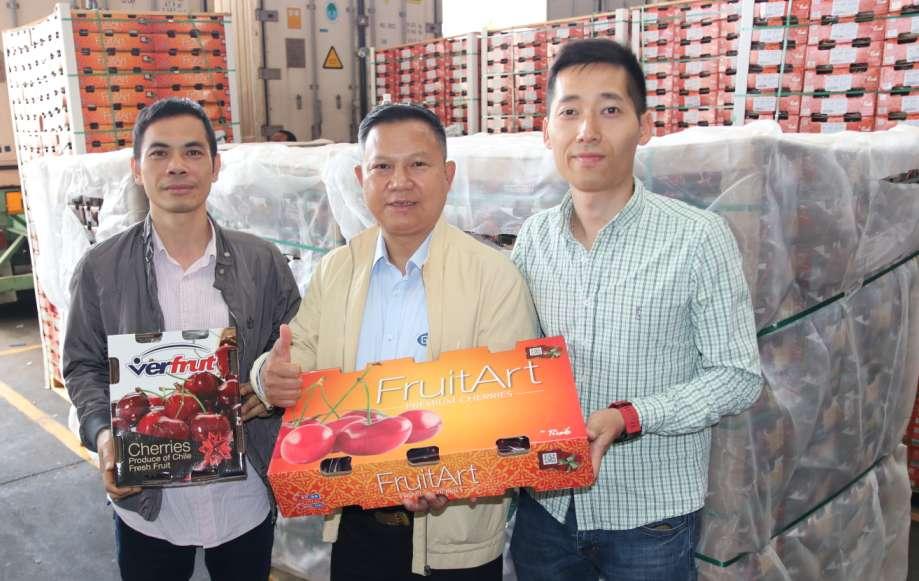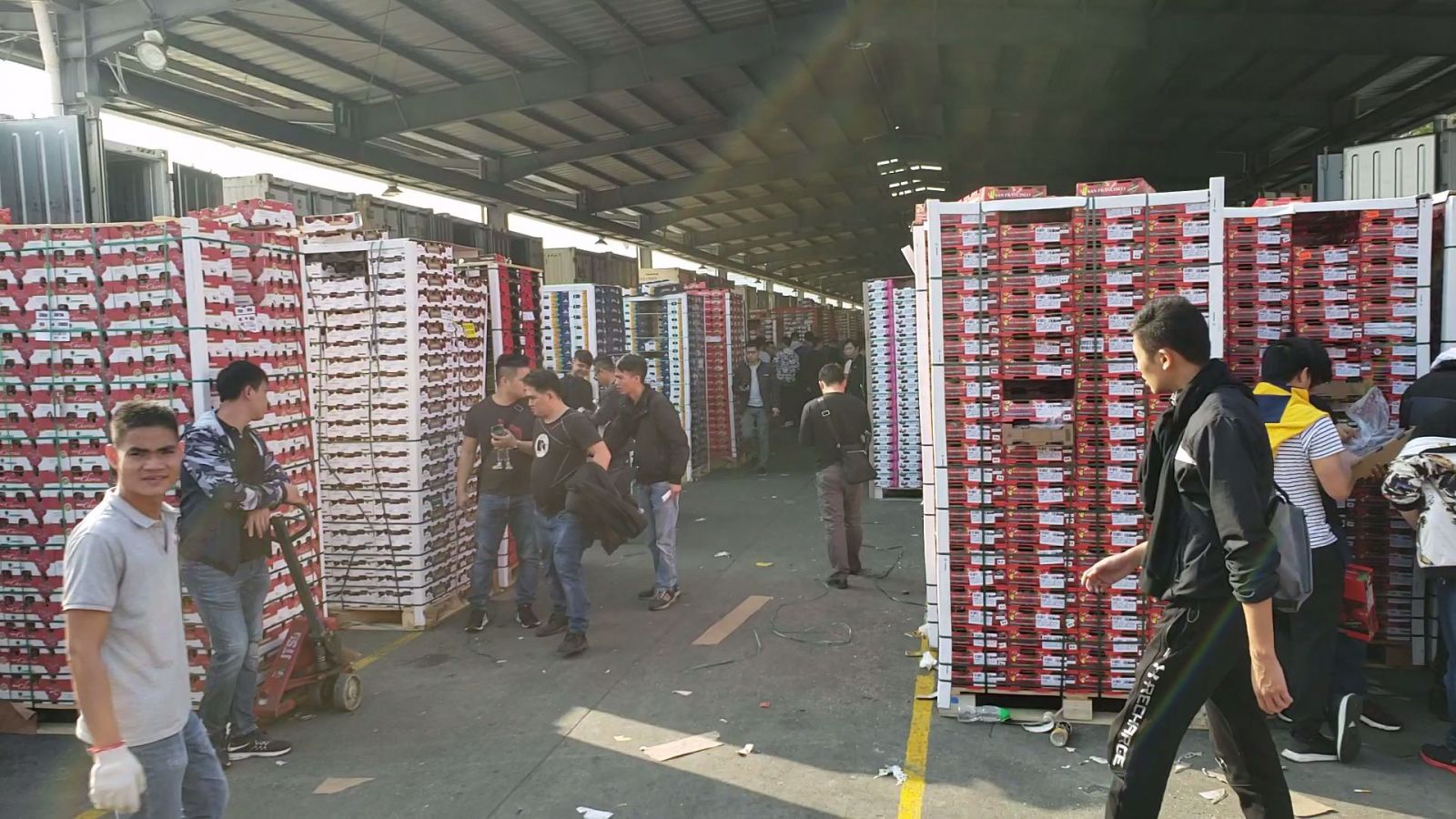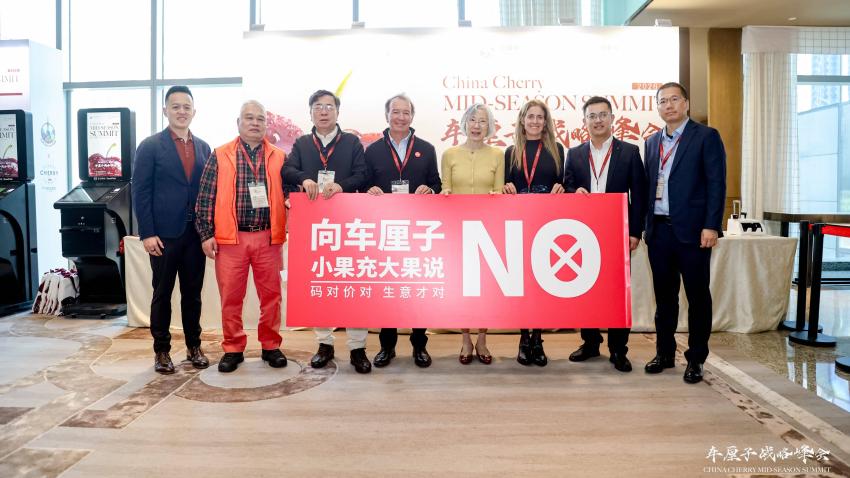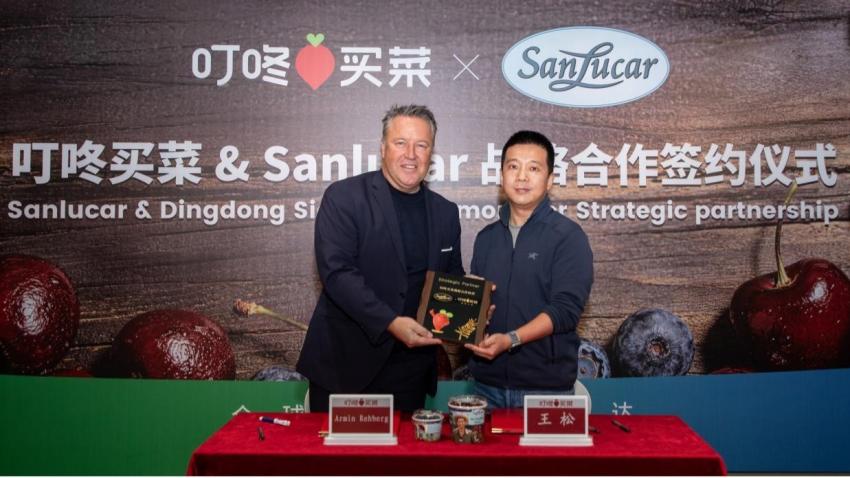You are here
Back to top2018/19 Cherry Sea Shipments: Smaller Volumes but More Vessels

David Liang of Shanghai Guohai Trading Co. Ltd. (center)
Although the season for selling fresh Chilean cherries in China starts from November with small shipments arriving by air freight, things really start to pick up in mid-December with the arrival of the first ocean shipment of cherries. This year’s first shipment of 100 refrigerated containers of cherries from Chile arrived to port in Hong Kong on December 14. The second arrival, this time of a vessel carrying about 300 containers of cherries, took place on December 21. Produce Report took the opportunity visit Guangzhou’s Jiangnan market on December 22 and watch the flurry of activity as traders unloaded the containers and readied pallet loads for delivery to the next customer.
We met with David Liang (梁国坚), the founder and president of Shanghai Guohai Trading Co. Ltd., an importer based at Jiangnan that was among the companies importing containers of cherries and distributing them to customers across China.
Liang has been working in the fruit industry in China for more than three decades, buying fruit from suppliers around the globe. He recalls the first time a commercial delegation from Chile visited Jiangnan in 2008, which laid the groundwork for direct cherry shipments from Chile to China.
According to Liang, the Chilean cherry industry has now reached a high level of maturity across all segments. He said the cherries arriving this season from Chile, whether by air or sea, are generally of excellent quality. Liang added that although hailstorms in Chile in November will inevitably depress cherry volumes this year, the better flavor of cherries compared to last year means that sales are brisk and prices stable, so he is generally optimistic about the 2018/19 season.
One major difference so far this year compared to previous years is the frequency of arrivals of ocean shipments. Last year, there was generally one arrival per week carrying a very large volume of cherries. This year, in addition to the fastest Hamburg Sud “charter” vessels arriving weekly from Valparaiso Chile to Hong Kong, there are also shipments coming on vessels operated by Hapag Lloyd and Evergreen. This means that although overall volume is similar to last year, there are 2-3 arrivals per week instead of just one. Liang said he and other importers generally prefer this situation of more arrivals with smaller volumes in each arrival because it mitigates risk, especially the danger of long delays at customs and quarantine due to too many cherries arriving all at once.

Discussing the sharp spike of fruit sales in China just before the Lunar New Year and Spring Festival celebration, Liang said that Guohai’s two best selling items for that period are Chilean cherries and Peruvian table grapes. As for the cherries, each year Guohai has already planned out its purchasing by September r. Then, in November, it sends employees to personally inspect the orchards in Chile. He says that by this point in its development, the company values predictability above all.
“This year we will buy a higher volume of cherries than last year,” says Liang. “And we will buy entirely well-known, premium brands. At all the links in the chain, from cultivation, to post-harvest, to grading, to packing and shipment, the larger suppliers are more professional, which means that the quality of the shipments we receive from them is consistently higher. To win in the China market, you need a good brand, continual supply and stable quality. All three of those are indispensable.”
Produce Report also spoke to Frank Chen, Import Manager at Shanghai Guohai Trading Co. Ltd. about this season’s Chilean cherry prices. Price varies widely depending on variety, size and quality. Chen said that as of December 22, at the low end, Royal Dawn cherries were selling for RMB 200+ per 5kg box at wholesale. At the high end, Santina, a favored variety, could go for above RMB 400 per 5kg box (1 RMB = 0.15 USD).
This shows that quality really has a big impact on price when it comes to imported cherries in China. “Firmness, texture, luster, deepness of color, does it have any blemishes, is the stem still green, these are some of the ways you can judge if it’s a good or bad cherry,” says Chen.
Related Reads

Yu Lu, vice president of CFNA; Xu Zheng, general manager of Jiaxing Haiguangxing Market Management Co. Ltd.; Zheng Nanshen, general manager of Guangzhou Jiangnonghui Market Service Management Co. Ltd.; representative of the Cherry Professional Committee of CFNA from the Chair Unit, Joy Wing Mau Group; representative from the Vice-Chair Units, Jinguo Trading Co. Ltd./Frutacloud Supply Chain; representative from the Vice-Chair Unit, Riverking (Shanghai) Agricultural Technology Development Co. Ltd.; Ivan Marambio, president of Frutas de Chile; and Claudia Soler, executive director of the Chilean Cherry Committee (listed in no particular order).














Add new comment